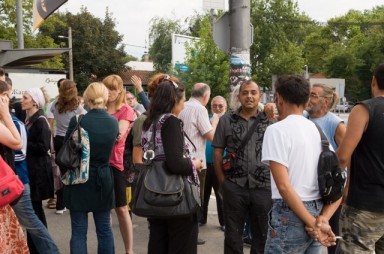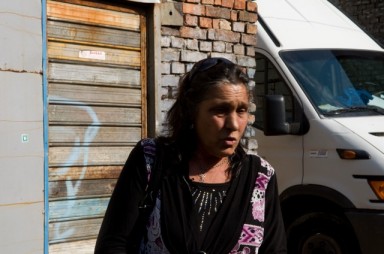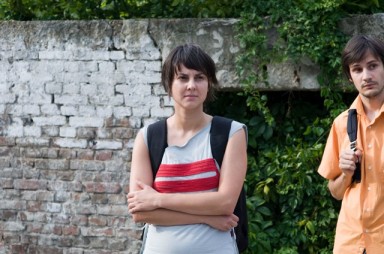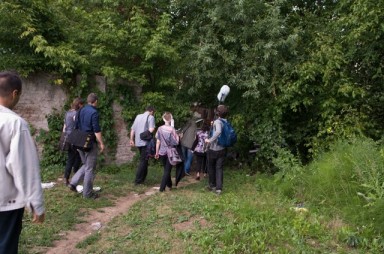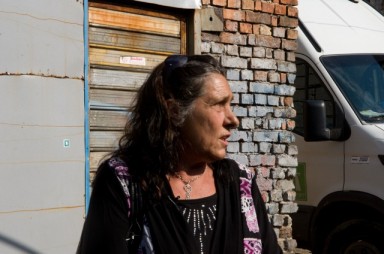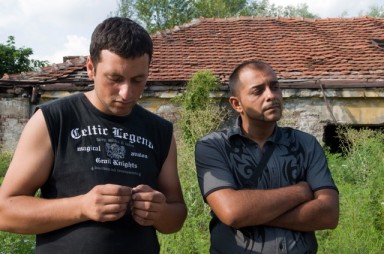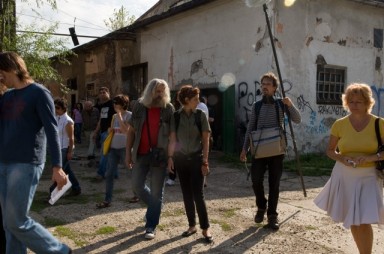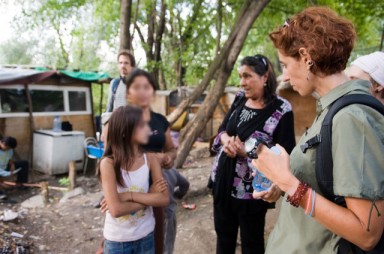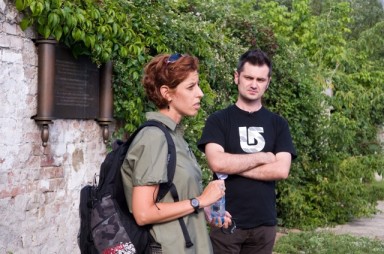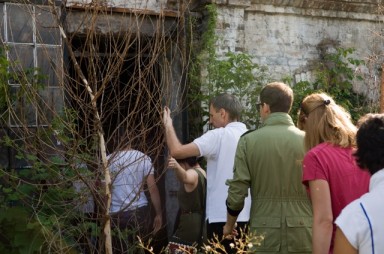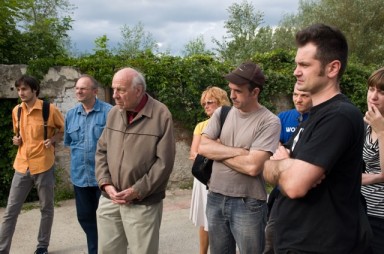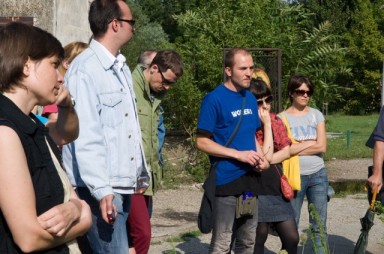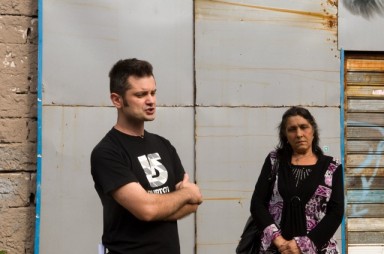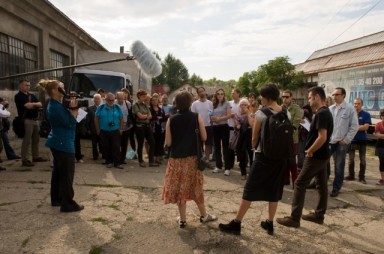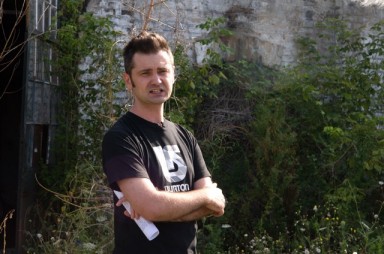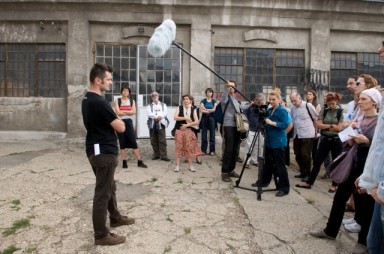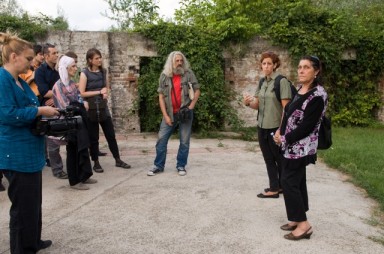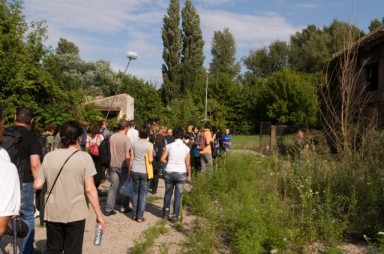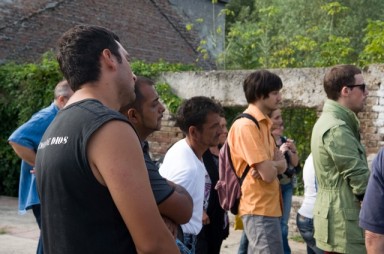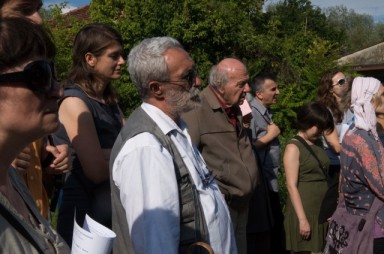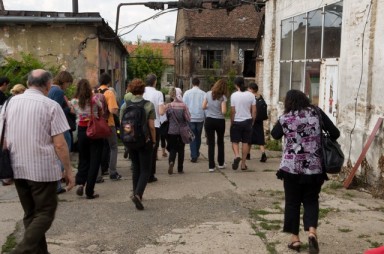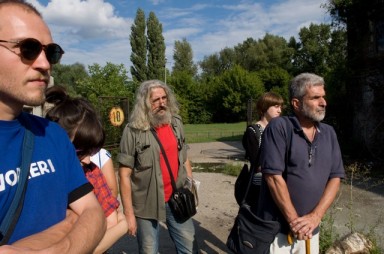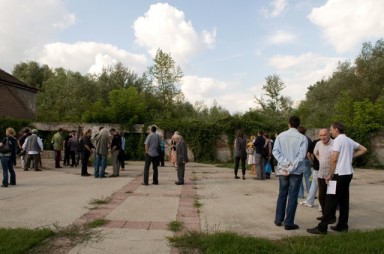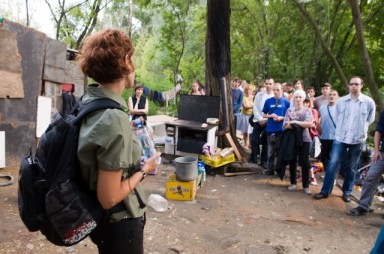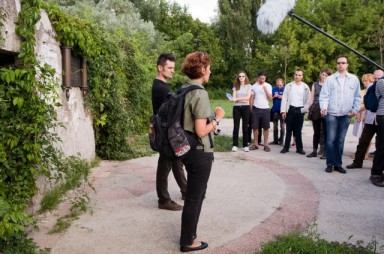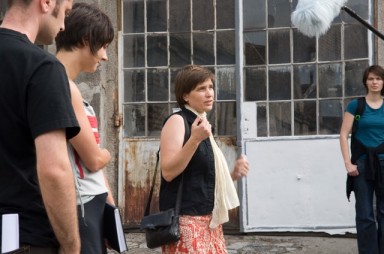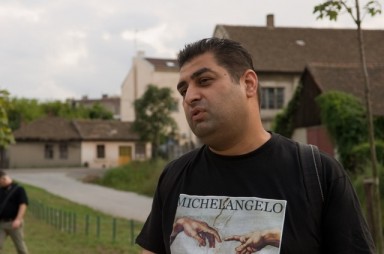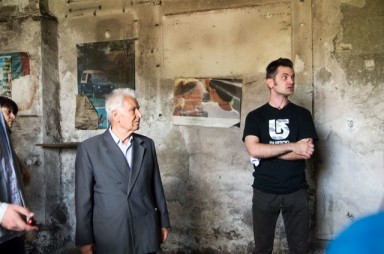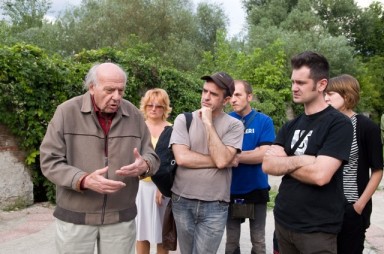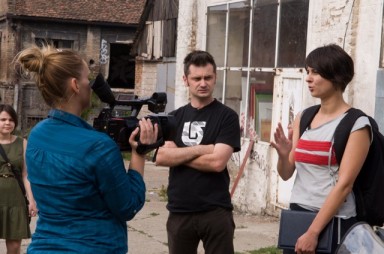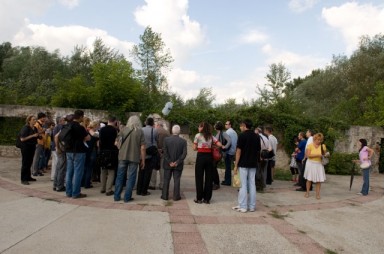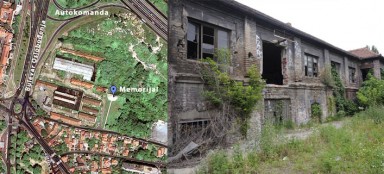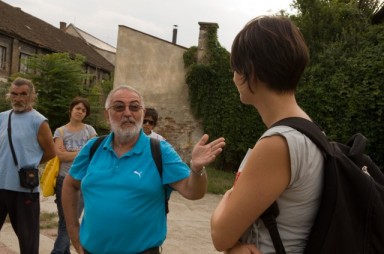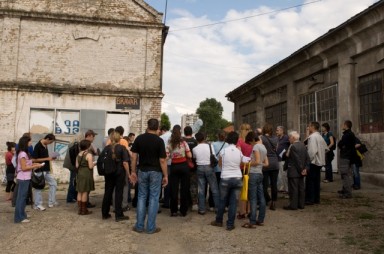Former transit camp Topovske šupe
A visit to the site Topovske šupe near Autokomanda, 30 June 2011
The working group preparing the visit presented the results of the research on the history of the camp and the contexts of both past and present racism and fascism. Milan Radanović talked about the realities of the life in Belgrade in the second half of 1941 and the historical facts related to the Topovske šupe camp that have been collected, although no thorough research has ever been conducted. Roma activist, Borka Vasić who lost her relatives in the camp shared the facts she knows about the time when Roma and Jewsish hostages were held there, as part of the retaliation introduced by the Wehrmacht. Together with Jovana Vuković, Borka Vasić is fighting forced eviction of Roma residents of Belgrade. She herself lives in an informal settlement in daily fear of eviction. Jovana Vuković talked about the contemporary forms of racism in Serbia and Europe, inclusion and discrimination of the poor and the EU policies towards refugees and immigrants.
The approach consisting of joint research and an analysis of the past outside the institutional and/or academic framework is aimed at introducing a practice of remembrance that goes beyond a ritual remembering of the victims, the one that is not based on the mechanisms of exclusion and categorization. We believe that such a practice of remembrance can emerge from unmediated discussions and a critical attitude towards the contemporary society and the dominant interpretations of history.
Head of the working group: Ana Vilenica
Idea and coordination of organized visits: Rena Raedle
Guides: Milan Radanović, Borka Vasić, Jovana Vuković
Organized and produced by Cultural Centre REX/ B92 Fund
Carried out with the support of Rosa Luxemburg Stiftung Southeast Europe
A Forgotten Site of Great Suffering
The locality Topovske šupe (cannon sheds) is situated at Autokomanda in Belgrade. This site of great suffering is barely known to the wider public and hard to reach. In order to reach Topovske šupe one has to pass through the yards of several half-empty and ruined industrial facilities behind the bus stop at Autokomanda. The Topovske šupe site, the former horse stables and an artillery depot of the army of the Kingdom of Yugoslavia was where a large Nazi concentration camp for Jewish and Roma men was situated from late August to December 1941. This camp was a storage of humans, hostages put to death by firing squad in retaliation for shot and wounded Wehrmacht soldiers. Two mass executions by firing squad, in October 1941, the one when 1400 Jews were taken from Topovske šupe to be executed and the other when 2000 Jews and 200 Roma met the same fate were particularly significant. The executions were carried out in the vicinity of the village of Jabuka, near Pančevo and at the execution site in Jajinci.
A tour of the Topovske šupe site was organized by Roma activist, Borka Vasić, human rights activist, Jovana Vuković and Milan Radanović, on 30 July, 2011, as part of the project A Visit To Staro Sajmište. At the time the war broke out, Borka Vasić's mother was eight years old and she passed on to her children the story of her father and older brother, Roma arrested in Šabac, interned to the Topovske šupe camp and later executed at Staro sajmište. While we were crossing the deserted and muddy yard, past the dilapidated buildings, Milan Radanović, described the historical facts related to the concentration camp and its place in the history of the Second World War to around forty people who visited the site. Thus, we discovered that towards the end of September 1941, Adolf Hitler personally authorized that a hundred Serbian, Jewish or Roma civilians be executed for each German soldier who gets killed. Belgrade was the only capital in the occupied Europe with several concentration camps and Serbia was the first country to be declared fully cleansed of Jews (Judenfrei) in early May 1942. We found out that the German lieutenant who ran the executions in Jabuka survived the war and was questioned by a court in West Germany in the 1960s when he confessed everything and provided a detailed description of the events. However, he was never tried or extradited to Yugoslavia.
The inhabitants of a small informal Roma settlement located around twenty metres away from the Topovske šupe site testify that fascism and discrimination are not a thing of the past. They claim to being continually harassed by young skinheads who throw stones at them and emphasize that the police mostly refuse to come to the scene of the attacks. We also learned from Milan Radanović, that the future of the site of Topovske šupe is quite uncertain, as the Delta company that owns the entire area between Kumodraška Street and the motorway intends to demolish all the buildings on that stretch of land, including the Roma settlement and build the largest shopping centre in the Balkans. Ending the tour of the site, Mr Radanović said: "I sincerely hope that this site will not be destroyed and a shopping centre built here, as it would be truly inexcusable. That would be disrespectful of the past of our city and the victims of this camp."
The visits to several other historical sites where crimes were committed in the Second World War will be organized this year as part of the project A Visit To Staro Sajmište. The first visit is planned for late August, when a tour of the execution site in the village of Jabuka where almost twenty thousand Serbs, Jews and Roma perished will take place.
Tadej Kurepa
